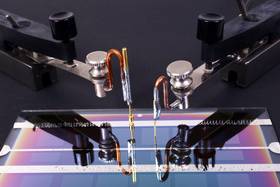Content

Objectives:
To mediate segments of optoelectronics from materials over devices to circuits and systems and to upgrade them with modern trends. To explain principles of successful examples and concepts and outline potential of their implementation.
Required pre-knowledge:
Electron devices.
Contents:
Advanced materials in optoelectronics: heteroatomous, thin-film inorganic and organic semiconductor materials. Characterisation and properties of optoelectronic materials.
Light sources: classification of broad-band, narrow-band and spectrally selective light sources; thermal sources (black and grey body), gas lamps and flashes; electroluminescent sources; vacuum fluorescent sources; plasma sources; light emitting diodes, laser diodes; lasers. Displays: plasma, liquid crystal, laser, holographic.
Detection of optical signals: thermal and photonic detectors, static and dynamic characteristics and performances of fotodetectors, read-out analog and digital electronics for detector arrays. Noise of detectors and circuits. Color detectors: metameric error, configurations of color detectors and Moire effect, color detector arrays. CCD and CMOS detector arrays and cameras. Optocouplers. Optical fibers. Assemblies of optoelectronic systems. Advanced optoelectronic systems.


